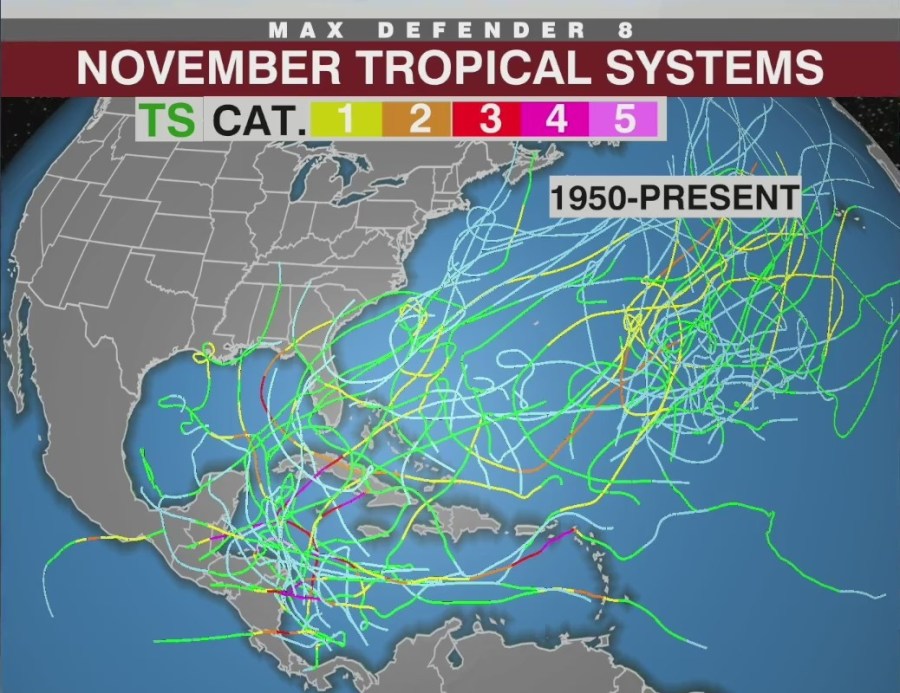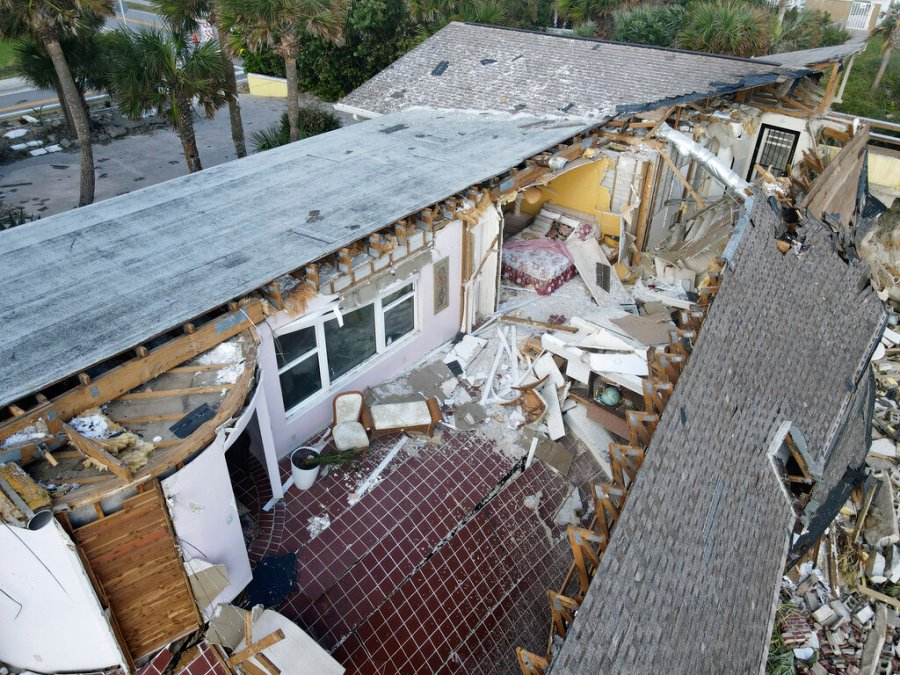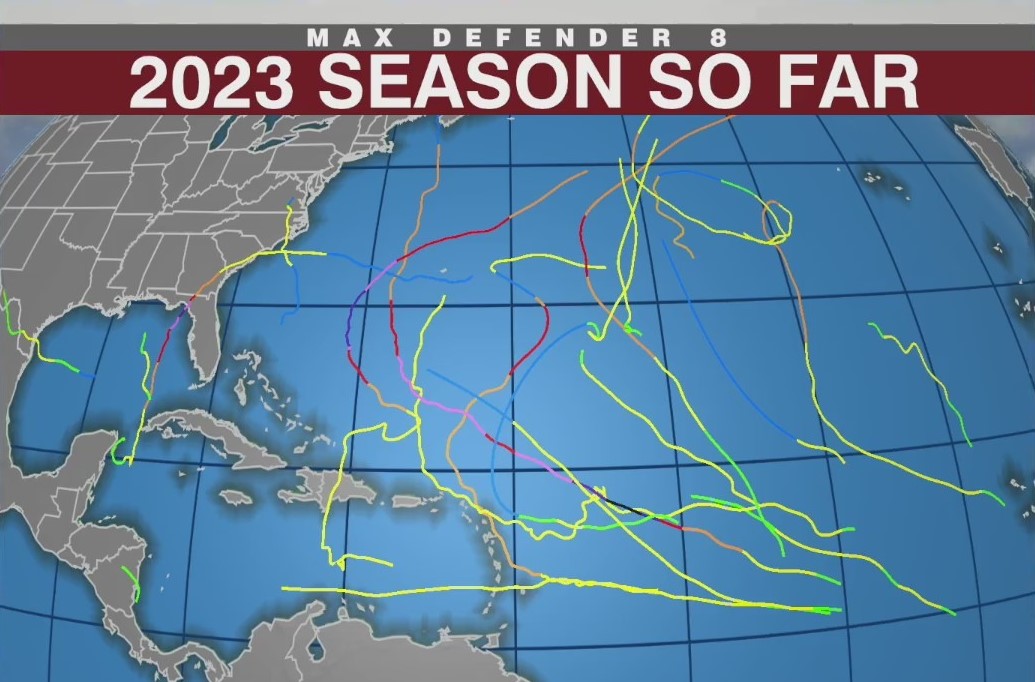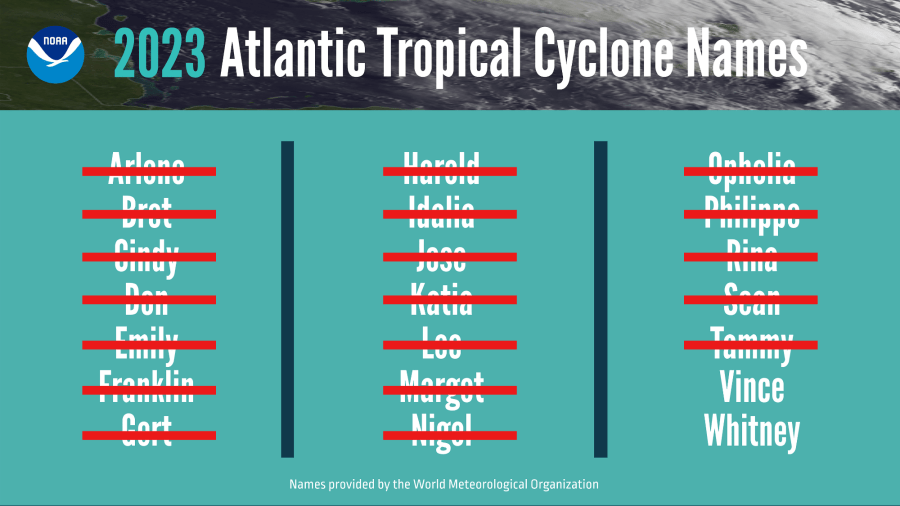TAMPA, Fla. (WFLA) — November is the last month of hurricane season, but the tropics could still churn out a storm or two.
Cooling ocean waters can offer some relief from the major hurricanes that use its energy as “fuel.” However, we’re coming out of an October that smashed global heat records, in part, due to warming ocean temperatures.
November hurricanes, although uncommon, are still possible.

“Since record keeping began, 19 known hurricanes have struck land in November,” WFLA meteorologist Rebecca Barry said. “That includes the Caribbean basin down into Mexico, Nicaragua and those areas.”
Of those 19 hurricanes, eight reached major hurricane status. Cuba has experienced the most November strikes out of any country.
The 2022 Atlantic hurricane season saw an unusually active final month, with hurricanes Lisa, Martin and Nicole appearing in November.
One year ago: Hurricane Nicole makes landfall in Florida (twice)

Hurricane Nicole made landfall in Florida near Vero Beach on Nov. 10. It weakened into a tropical storm shortly after landfall, according to the National Hurricane Center, before passing over the Florida peninsula and making a second landfall in the panhandle region.
The storm caused flooding and beach erosion in areas that were still recovering from Hurricane Ian.
Videos of beachside buildings nearly collapsing into the sea made national headlines after Nicole struck. Dozens of homes were deemed unsafe in Volusia County alone.
2023 Atlantic hurricane season: Where are we now?

Despite having an above-average, active season, just four storms reached the mainland United States. Four storms encountered land in the Caribbean, while 11 systems ended up veering out to sea, where they would eventually fizzle out.
“Luckily, most of the storms this year have been ‘fish storms.’ They haven’t impacted land at all,” WFLA meteorologist Amanda Holly said. “Regardless, 2023 is considered above-average, even if we ended the season today.”
There are still three weeks left in hurricane season. Meteorologists are keeping an eye on the Caribbean as the most likely location for development, but long-range forecasts show very little tropical activity over the next two weeks or so.
There are just two names left on this year’s list, so what happens if we run out?

In 2021, the World Meteorological Organization (WMO) created a supplemental list of names to be used in case the regular list was exhausted. This came after a busy 2020 season that blew through the regular list of names, plus the entire Greek alphabet, which was the previous backup plan.
The WMO chose to stop using the Greek alphabet because it drew attention away from the storms themselves and was difficult to translate. It resulted in concurrent storms with similar-sounding names, which caused confusion.
Watch Tracking the Tropics Wednesdays at 12:30 p.m. ET/11:30 a.m. CT.
Be prepared with the WFLA Hurricane-Ready Guide 2023 and stay ahead of tropical development with the Tracking the Tropics newsletter.






